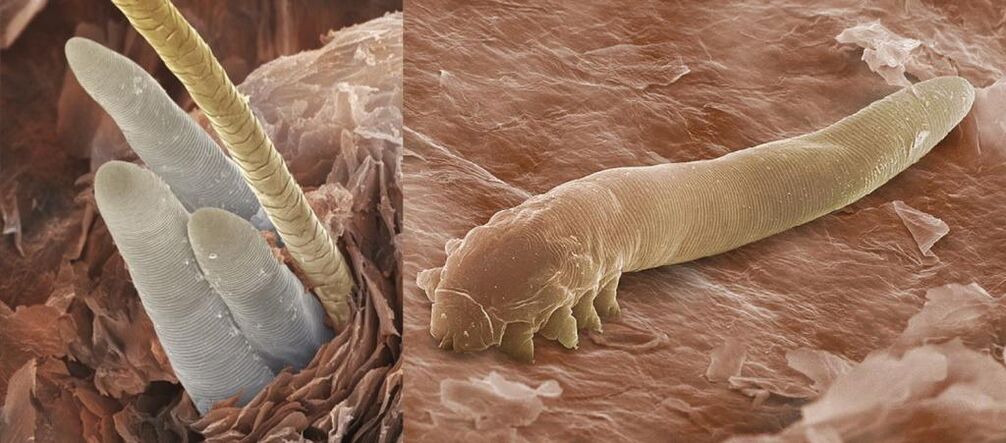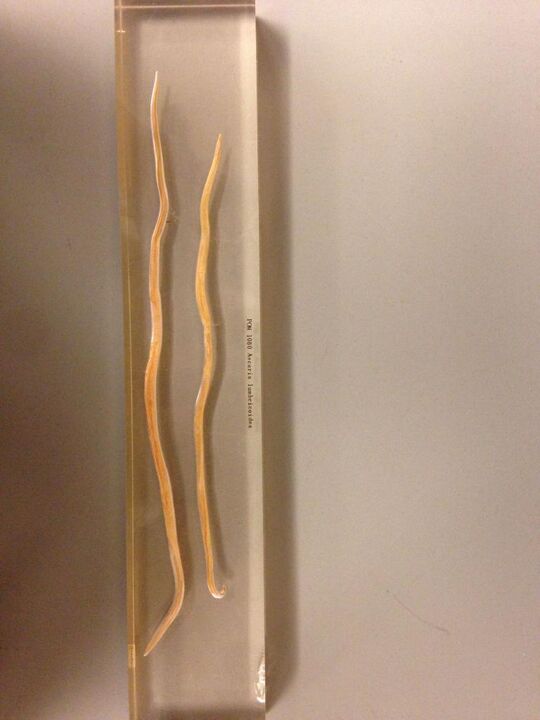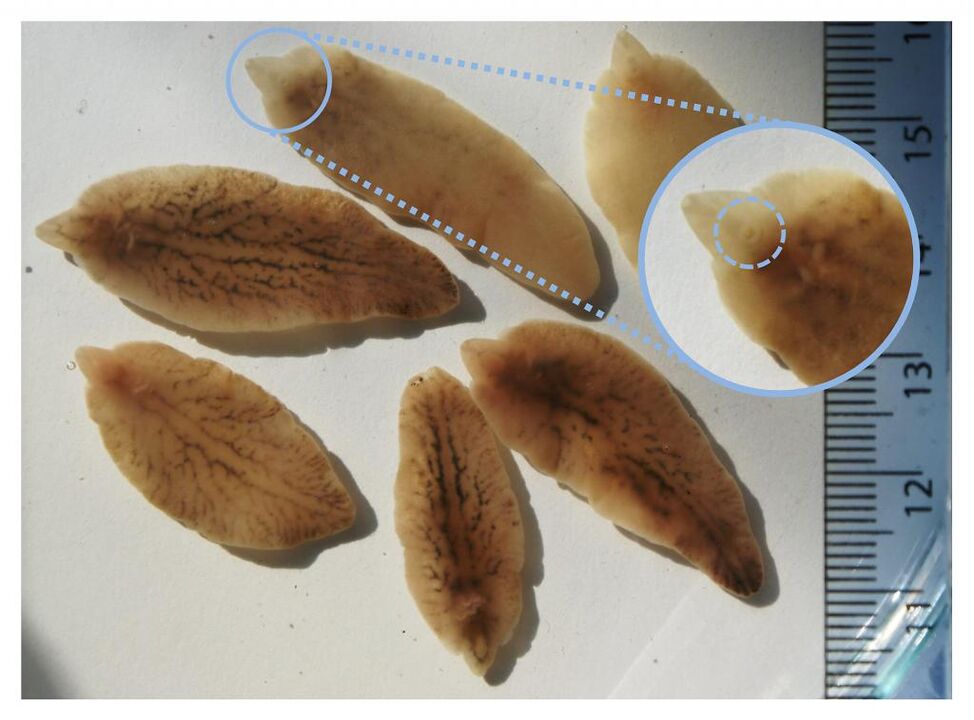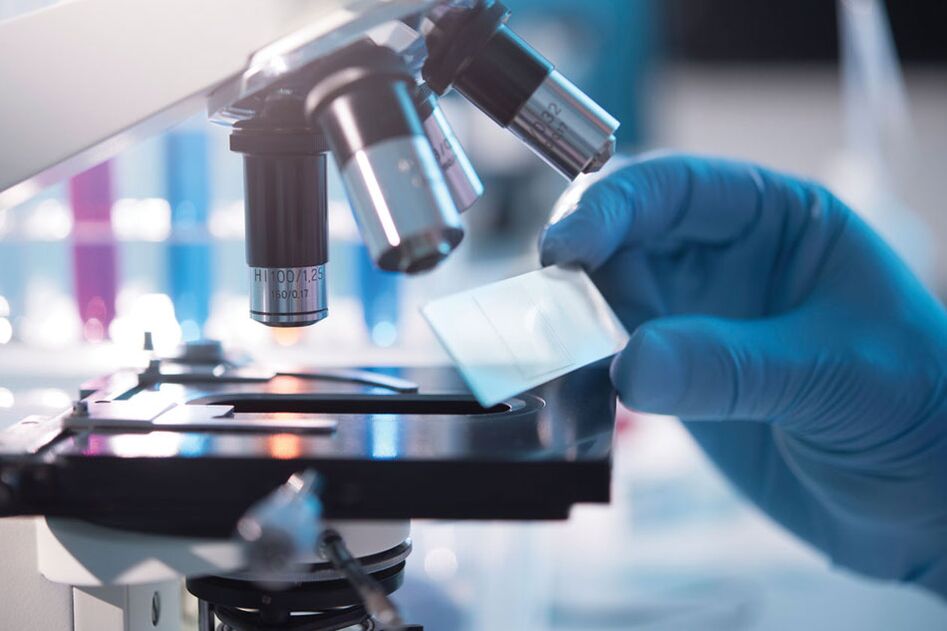Parasitic infections represent various symptoms and diseases resulting from the entry of eggs or adult parasites into the human body.Often the first signs of the disease are several days, and in some cases, several months or even in years.This is due to the life cycle of parasites and their main functions: good camouflage and protect their lives by taking food from the homeowner's body.
Types of parasites and their features
Parasitic infections are divided into three groups depending on certain features of their manifestations:
- Ectoparazites.
The main place is the surface of the human body.These include bits, fleas, ticks and bedrooms.Basically, according to human blood, some cases, like the mites that generate demodycosis, the main dining is the secretion of sebaceous glands or dead epithelia (leather) cells. It is very easy to recognize the first signs of a parasitic infection, because they caused burning in itching and habitat.Some Ektoparas are carriers of serious diseases: Typhus, ant, ensefalitis and truckomasiaz.They hurt human health, including death.
It is very easy to recognize the first signs of a parasitic infection, because they caused burning in itching and habitat.Some Ektoparas are carriers of serious diseases: Typhus, ant, ensefalitis and truckomasiaz.They hurt human health, including death. - Endoparasites (Protozoa).
Influence mainly in domestic authorities.These are cells in the structure, so the name of the protozoa.However, they can lead to severe forms of diseases.This is a parasitic blood infection caused by the main diseases of the group, amoeba or giardy and intestinal infection. - Helminths.
They are the subsidiaries of the most common forms of parasitic infections.In the human body, the development periods occur in the intestines and tissues, which are mainly the manifestation of disease symptoms.
Round worms (nematododes)
These are parasites that are round in the crossroads of the body.Sexual features are easily distinguished.Women are generally larger than men.However, representatives of this class are also hermaphrodites.All Nematodes are undergoing stages of development: eggs, larvae and adults.This class includes:
- Pinworm.The disease causes enterobiasis.Mostly influences preschool and primary school children.
- Whip.Cause the disease trichuriazis.There is a different form of body.2/3 of body length, has a thin diameter that reminds the human hair or rope.The other tip of the body is larger in diameter and contains the intestines.
- Ascaris.The disease causes ascariasis.Adults reach 25 cm (male) and 40 cm (female) size.After Larva entered the human body, he passes through the stomach and enters the small intestine.From there, through the pores with blood flow, they enter the lungs in the lungs in the lungs in the lungs.Then the larvae begin to rise to Larynxa.After reaching the oral cavity, it is absorbed again.Once in the small intestine, the larvae cannot re-enter the blood circulation through the pores due to the large size of the larvae.They grow up there in 2-3 months.After that, reproduce reproduction and period is repeated.The woman can put more than 200,000 eggs per day.

Tapeworms (cestodes)
These are parasites that look like a ribbon shape of the body.A different feature of this class is the absence of the digestive system.These include:
- Echinococcus.Cause echinococosis of the disease.This parasite consists of small size (2-9 mm) and several segments and suctions.There are many eggs in the uterus of a sexually mature person, there are larvae inside.The main places of the echinococcus's localization are the liver and lungs.There is a chronic disease called hydatid cyst.
- Bull tapeworm.Lead to the teniarinchiasis of the disease.In the Larval stage, there is an intermediate host - cattle.Once in the human body, it develops up to the ribbon stage in the small intestine.The body of a mature parasite is up to 1,000 segments and can reach 4-10 meters in length.
- Pork tapeworm.Lead to the taenosis of the disease.Externally, a bull is very similar to tapeworm.There is a medium owner: pigs, dogs, camels, rabbits and rabbits.It is a parasite in the intestines in humans.The size of a mature person is not more than 4 meters in length.
- Tapeworm is wide.Cause dipillobotriasis to the disease.Live in freshwater bodies.Uses crustaceans and fish as an intermediate owner.Parasitates the small intestine in the human body.Can reach a few mature meters.
Straight worms (flukes)
During the life cycle, these parasites can change several intermediate hosts.People can be parasitized in any body.This group includes:
- Schistosomes.The disease causes schistosomiasis.They can enter the human body through contact with pure water contaminated.The parasite penetrates the skin and is actively entering the blood circulation system, which is actively reproducing.Women can produce up to 300 to 3,000 eggs per day.In addition, eggs with blood flow spread throughout the body and continue to develop in any body.Their body length is not more than 0.1-0.2 cm.
- Liver fluxes.Cause opisthorchiasis to the disease.The length of an adult varies between 3 and 5 cm.When the human body enters the body, a parasite with bile channels, gallbladder, liver and pancreas.It is stabilized in these bodies using the suction cups located in the body.

Ways to penetrate parasites to the human body
- The feeding route of the infection is considered the most common.A person is infected by eating poorly washed vegetables and fruits.Not enough heat treated meat is especially dangerous.In addition, a person infected a human parasitic infection if the rules of personal hygiene are not persecuted.For example, don't wash your hands before dinner.
- Transplacental route.The parasitic infection is transmitted to the baby through a placenta from a pregnant woman.For example, these are diseases such as toxoplasmosis, malaria or fork.
- Percutaneous road.The parasite enters the human body with leather.These are mainly schistosom and hookahs.
- The way to contact.Parasite is transmitted by dirty hands, contaminated personal items and underwear.Lice, itching and pinworms are most transmitted.
- The transmission way.The infection occurs after the bite of insects carrying parasites.For example, malaria.
Symptoms
Many parasitic diseases have no symptoms in the early stages.This is due to the stages of development of pathogen.Each individual type of parasite shows itself differently.The total symptoms of parasitic infection include:
- Itching.
- Redness of the skin as urticari.
- Diarrhea.
- Constipation.
- The flatness.
- Nausea, vomiting.
- Spasms and pain in the gastrointestinal tract.
- Loses body weight without diet or increased physical activity.
- The condition of fever.
- High body temperature for a long time (38-40 ˚c).
- Long-term attacks of dry cough.
- Enlarged lymph nodes.
- Painful feelings in the muscles.
- Psycho-emotional disorders.
Diagnosis

If you suspect the presence of parasitic diseases, you must pass a number of tests.The diagnosis of parasitic infections allow us to determine the existence or location of the parasite, its type and place.The data obtained will help you properly diagnose the doctor and determine the correct treatment.
Diagnostic methods include:
- Stool examination.Allows you to determine the existence of most types of parasites living in the intestines.Their eggs, larvae and body segments are excluded in feces.There are two types of analysis:
- The example of a stool is examined for Helmint eggs and larvae.The analysis is delivered to the laboratory in which he examined the doctor's smear and a microscope.This method is often used, but not quite accurate.To put a recent diagnosis, the patient must spend three times in a short period of time.This is due to the construction period of the parasites and eggs found in this research method.
- Itching (washing) from the layers of the anus.This test is only used to detect Pinworms - a type of just a Helminton.Parasitic infections are more common in children than adults.For this reason, this analysis is mainly carried out for children.The laboratory is a cotton or glass eyelid, moisturizes water or glycerin and wash it from the perianal layers.Next, the emerging material is applied to a glass slide and is investigated under the microscope.This analysis is also implemented using a different method: the laboratory assistant pastes the piece of tape attached to the anal transition, presses and ribs.The sticky ribbon is then pasted in a bottle slide and is also viewed under the microscope.The parasite is quite clearly diagnosed.Using these methods, the associate of the laboratory assistant is not only Helmint eggs, but also adults are also able to investigate.
- Serebrospinal liquid, sputum, duodenum (Screa), the examination of urinating.It is determined based on the results of a patient in question to determine the existence of the parasite and determine the location.These biological liquids are analyzed using microscopy and macroscopy.First, the resulting example is examined to have adults to be individuals, and then the microscopy is carried out to reveal the eggs and larvae of parasites.
- Blood test.Blood-tested blood test methods for parasitic infections allow you to determine the presence and type of pathogen with high accuracy.Three types of diagnosics are used:
- Serological reactions.Allows the patient to determine the participation of parasite antibodies in the blood serum.This method is considered a highly specific, but is considered below the PCR diagnostics.
- PCR Diagnostics.This method is based on the DNA definition of parasites in any biological fluid purchased for analysis.
- Genetic research.This involves revealing the genome of the parasite in a patient's blood sample.This method is less common than others, but has high accuracy.
- Examination of biopsy material and lymph nodes.For this analysis, the doctor sends a small part of a body, tissue or all lymph node, for histological examination.In this way, the presence or absence of parasites is diagnosed.
Recommendations to prepare the test
Before taking tests for parasitic infections, you need to prepare them properly.If the recommendations are followed, the correctness of the diagnosis is growing, because there are no factors that intervene in the effectiveness of the material, the effectiveness of the methods.
Get ready for a stool test:
- Antibiotics, anti-inflammatory drugs and antacides should be stopped.The use of medicines and other drugs containing bismuth and iron is also unacceptable.
- An X-ray examination using a barium or a colonoscopy was carried out a stain to clean the intestines during this period, then the stool test can be accepted only after 2-3 days.
- It is not recommended to be forgiven when menstrual bleeding begins or deteriorates hemorrhoids.
Getting ready for a blood test:
- You need to stop taking pharmacological drugs affecting the number of blood.
- Three days before the test, you should follow a light diet, you need to eat fatty foods and give up alcohol.
- Blood test for parasitic infections is carried on a blank stomach.A small amount is allowed to drink clean drinking water.
The most special preparations for other tests are not required.You only need to follow doctor's advice.
Treatment
Unfortunately, the symptoms of parasitic infections are not always found in the initial stages of the disease.In such cases, treatment begins late.It is important to understand: how difficult the parasites stay in the body, how difficult it will get rid of it.
The therapy of contagious and parasitic infections is divided into two areas:
- Symptomatic treatment.Aims to eliminate clinical manifestations of the disease.These include reducing body temperature, reduce redness and itching and normalize the activities of the gastrointestinal tract.
- Ethiological treatment of parasitic infections is aimed at getting the infection agent.
In some cases, surgery may need.Alveococcois is applied for echinokockosis and some kind of vibrating infection.
When the body is dehydrated, salt solutions are determined.
Only one doctor can determine the treatment of parasitic infections based on laboratory tests and patient interviews.
Prevention
It is very important to observe the prevention of parasitic infections.In most cases, this will help prevent pathogens from entering the body.

Preventive action include:
- Compatibility to Private Hygiene Rules: You must wash your hands before visiting the toilet and eat from the street.
- Vegetables and fruits should be washed well.
- It is important to carry out enough heat treatment in meat, fish and seafood.
- Tap water should not be used as drinking water because it may not always be free from parasites.Additional cleaning to use household filters will not help.The best choice would drink boiled or bottled water.
- If pets live at home, they must be luxurious every six months.If you show signs of parasitic diseases and contact the veterinary clinic, you must contact your pet.
- You must (especially children) the iron underwear (especially children) after washing.
- After visiting exotic countries, it is recommended to be examined once a year to implement the land, and parasitic infections of children's institutions, and if necessary, if necessary.
























